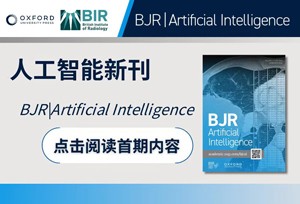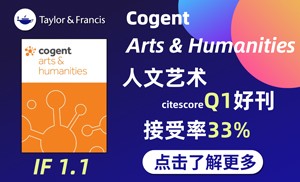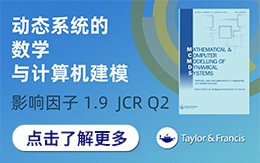-
A Comprehensive Survey on Biclustering-based Collaborative Filtering ACM Comput. Surv. (IF 23.8) Pub Date : 2024-06-22 Miguel G. Silva, Sara C. Madeira, Rui Henriques
Collaborative Filtering (CF) is achieving a plateau of high popularity. Still, recommendation success is challenged by the diversity of user preferences, structural sparsity of user-item ratings, and inherent subjectivity of rating scales. The increasing user base and item dimensionality of e-commerce and e-entertainment platforms creates opportunities, while further raising generalization and scalability
-
A Challenge-based Survey of E-recruitment Recommendation Systems ACM Comput. Surv. (IF 23.8) Pub Date : 2024-06-22 Yoosof Mashayekhi, Nan Li, Bo Kang, Jefrey Lijffijt, Tijl De Bie
E-recruitment recommendation systems recommend jobs to job seekers and job seekers to recruiters. The recommendations are generated based on the suitability of job seekers for positions and on job seekers’ and recruiters’ preferences. Therefore, e-recruitment recommendation systems may greatly impact people’s careers. Moreover, by affecting the hiring processes of the companies, e-recruitment recommendation
-
A Survey on the Applications of Semi-supervised Learning to Cyber-security ACM Comput. Surv. (IF 23.8) Pub Date : 2024-06-22 Paul Kiyambu Mvula, Paula Branco, Guy-Vincent Jourdan, Herna Lydia Viktor
Machine Learning’s widespread application owes to its ability to develop accurate and scalable models. In cyber-security, where labeled data is scarce, Semi-Supervised Learning (SSL) emerges as a potential solution. SSL excels at tasks challenging traditional supervised and unsupervised algorithms by leveraging limited labeled data alongside abundant unlabeled data. This article presents a comprehensive
-
Systems Interoperability Types: A Tertiary Study ACM Comput. Surv. (IF 23.8) Pub Date : 2024-06-22 Rita Suzana Pitangueira Maciel, Pedro Henrique Dias Valle, Kécia Souza Santos, Elisa Yumi Nakagawa
Interoperability has been a focus of attention over at least four decades, with the emergence of several interoperability types (or levels), diverse models, frameworks, and solutions, also as a result of a continuous effort from different domains. The current heterogeneity in technologies such as blockchain, IoT and new application domains such as Industry 4.0 brings not only new interaction possibilities
-
Domain Adaptation and Generalization of Functional Medical Data: A Systematic Survey of Brain Data ACM Comput. Surv. (IF 23.8) Pub Date : 2024-06-22 Gita Sarafraz, Armin Behnamnia, Mehran Hosseinzadeh, Ali Balapour, Amin Meghrazi, Hamid R. Rabiee
Despite the excellent capabilities of machine learning algorithms, their performance deteriorates when the distribution of test data differs from the distribution of training data. In medical data research, this problem is exacerbated by its connection to human health, expensive equipment, and meticulous setups. Consequently, achieving domain generalizations and domain adaptations under distribution
-
Maintenance Operations on Cloud, Edge, and IoT Environments: Taxonomy, Survey, and Research Challenges ACM Comput. Surv. (IF 23.8) Pub Date : 2024-06-22 Paulo Souza, Tiago Ferreto, Rodrigo Calheiros
The emergence of the Internet of Things (IoT) introduced new classes of applications whose latency and bandwidth requirements could not be satisfied by the traditional Cloud Computing model. Consequently, the Internet Technology community promoted the cooperation of two paradigms, Cloud Computing and Edge Computing, combining large-scale computing power and real-time processing capabilities. A significant
-
Applying Generative Machine Learning to Intrusion Detection: A Systematic Mapping Study and Review ACM Comput. Surv. (IF 23.8) Pub Date : 2024-06-22 James Halvorsen, Clemente Izurieta, Haipeng Cai, Assefaw Gebremedhin
Intrusion Detection Systems (IDSs) are an essential element of modern cyber defense, alerting users to when and where cyber-attacks occur. Machine learning can enable IDSs to further distinguish between benign and malicious behaviors, but it comes with several challenges, including lack of quality training data and high false-positive rates. Generative Machine Learning Models (GMLMs) can help overcome
-
Blockchained Federated Learning for Internet of Things: A Comprehensive Survey ACM Comput. Surv. (IF 23.8) Pub Date : 2024-06-22 Yanna Jiang, Baihe Ma, Xu Wang, Guangsheng Yu, Ping Yu, Zhe Wang, Wei Ni, Ren Ping Liu
The demand for intelligent industries and smart services based on big data is rising rapidly with the increasing digitization and intelligence of the modern world. This survey comprehensively reviews Blockchained Federated Learning (BlockFL) that joins the benefits of both Blockchain and Federated Learning to provide a secure and efficient solution for the demand. We compare the existing BlockFL models
-
A Review on the emerging technology of TinyML ACM Comput. Surv. (IF 23.8) Pub Date : 2024-06-22 Vasileios Tsoukas, Anargyros Gkogkidis, Eleni Boumpa, Athanasios Kakarountas
Tiny Machine Learning (TinyML) is an emerging technology proposed by the scientific community for developing autonomous and secure devices that can gather, process, and provide results without transferring data to external entities. The technology aims to democratize AI by making it available to more sectors and contribute to the digital revolution of intelligent devices. In this work, a classification
-
Security, Privacy, and Decentralized Trust Management in VANETs: A Review of Current Research and Future Directions ACM Comput. Surv. (IF 23.8) Pub Date : 2024-06-22 Mishri AlMarshoud, Mehmet Sabir Kiraz, Ali H. Al-Bayatti
Vehicular Ad Hoc Networks (VANETs) are powerful platforms for vehicular data services and applications. The increasing number of vehicles has made the vehicular network diverse, dynamic, and large-scale, making it difficult to meet the 5G network’s demanding requirements. Decentralized systems are interesting and provide attractive services because they are publicly available (transparency), have an
-
From Detection to Application: Recent Advances in Understanding Scientific Tables and Figures ACM Comput. Surv. (IF 23.8) Pub Date : 2024-06-22 Jiani Huang, Haihua Chen, Fengchang Yu, Wei Lu
Tables and figures are usually used to present information in a structured and visual way in scientific documents. Understanding the tables and figures in scientific documents is significant for a series of downstream tasks, such as academic search, scientific knowledge graphs, and so on. Existing studies mainly focus on detecting figures and tables from scientific documents, interpreting their semantics
-
Topology-aware Federated Learning in Edge Computing: A Comprehensive Survey ACM Comput. Surv. (IF 23.8) Pub Date : 2024-06-22 Jiajun Wu, Fan Dong, Henry Leung, Zhuangdi Zhu, Jiayu Zhou, Steve Drew
The ultra-low latency requirements of 5G/6G applications and privacy constraints call for distributed machine learning systems to be deployed at the edge. With its simple yet effective approach, federated learning (FL) is a natural solution for massive user-owned devices in edge computing with distributed and private training data. FL methods based on FedAvg typically follow a naive star topology,
-
A Review on the Impact of Data Representation on Model Explainability ACM Comput. Surv. (IF 23.8) Pub Date : 2024-06-22 Mostafa Haghir Chehreghani
In recent years, advanced machine learning and artificial intelligence techniques have gained popularity due to their ability to solve problems across various domains with high performance and quality. However, these techniques are often so complex that they fail to provide simple and understandable explanations for the outputs they generate. To address this issue, the field of explainable artificial
-
Foundations & Trends in Multimodal Machine Learning: Principles, Challenges, and Open Questions ACM Comput. Surv. (IF 23.8) Pub Date : 2024-06-22 Paul Pu Liang, Amir Zadeh, Louis-Philippe Morency
Multimodal machine learning is a vibrant multi-disciplinary research field that aims to design computer agents with intelligent capabilities such as understanding, reasoning, and learning through integrating multiple communicative modalities, including linguistic, acoustic, visual, tactile, and physiological messages. With the recent interest in video understanding, embodied autonomous agents, text-to-image
-
A Survey of Graph Neural Networks for Social Recommender Systems ACM Comput. Surv. (IF 23.8) Pub Date : 2024-06-22 Kartik Sharma, Yeon-Chang Lee, Sivagami Nambi, Aditya Salian, Shlok Shah, Sang-Wook Kim, Srijan Kumar
Social recommender systems (SocialRS) simultaneously leverage the user-to-item interactions as well as the user-to-user social relations for the task of generating item recommendations to users. Additionally exploiting social relations is clearly effective in understanding users’ tastes due to the effects of homophily and social influence. For this reason, SocialRS has increasingly attracted attention
-
Object-Centric Learning with Capsule Networks: A Survey ACM Comput. Surv. (IF 23.8) Pub Date : 2024-06-21 Fabio De Sousa Ribeiro, Kevin Duarte, Miles Everett, Georgios Leontidis, Mubarak Shah
Capsule networks emerged as a promising alternative to convolutional neural networks for learning object-centric representations. The idea is to explicitly model part-whole hierarchies by using groups of neurons called capsules to encode visual entities, then learn the relationships between these entities dynamically from data. However, a major hurdle for capsule network research has been the lack
-
A survey of 3D Space Path-Planning Methods and Algorithms ACM Comput. Surv. (IF 23.8) Pub Date : 2024-06-20 Hakimeh mazaheri, salman goli, ali nourollah
Due to their agility, cost-effectiveness, and high maneuverability, Unmanned Aerial Vehicles (UAVs) have attracted considerable attention from researchers and investors alike. Path planning is one of the practical subsets of motion planning for UAVs. It prevents collisions and ensures complete coverage of an area. This study provides a structured review of applicable algorithms and coverage path planning
-
AI-Based Affective Music Generation Systems: A Review of Methods and Challenges ACM Comput. Surv. (IF 23.8) Pub Date : 2024-06-17 Adyasha Dash, Kathleen Agres
Music is a powerful medium for altering the emotional state of the listener. In recent years, with significant advancements in computing capabilities, artificial intelligence-based (AI-based) approaches have become popular for creating affective music generation (AMG) systems. Entertainment, healthcare, and sensor-integrated interactive system design are a few of the areas in which AI-based affective
-
Toward a Privacy-Preserving Face Recognition System: A Survey of Leakages and Solutions ACM Comput. Surv. (IF 23.8) Pub Date : 2024-06-17 Lamyanba Laishram, Muhammad Shaheryar, Jong Taek Lee, Soon Ki Jung
Abstract Recent advancements in face recognition (FR) technology in surveillance systems make it possible to monitor a person as they move around. FR gathers a lot of information depending on the quantity and data sources. The most severe privacy concern with FR technology is its use to identify people in real-time public monitoring applications or via an aggregation of datasets without their consent
-
Secure UAV (Drone) and the Great Promise of AI ACM Comput. Surv. (IF 23.8) Pub Date : 2024-06-17 Behrouz Zolfaghari, Mostafa Abbasmollaei, Fahimeh Hajizadeh, Naoto Yanai, Khodakhast Bibak
UAVs have found their applications in numerous applications from recreational activities to business in addition to military and strategic fields. However, research on UAVs is not going on as quickly as the technology. Especially, when it comes to the security of these devices, the academia is lagging behind the industry. This gap motivates our work in this paper as a stepping stone for future research
-
An Introduction to the Compute Express Link (CXL) Interconnect ACM Comput. Surv. (IF 23.8) Pub Date : 2024-06-14 Debendra Das Sharma, Robert Blankenship, Daniel Berger
The Compute Express Link (CXL) is an open industry-standard interconnect between processors and devices such as accelerators, memory buffers, smart network interfaces, persistent memory, and solid-state drives. CXL offers coherency and memory semantics with bandwidth that scales with PCIe bandwidth while achieving significantly lower latency than PCIe. All major CPU vendors, device vendors, and datacenter
-
Macro Ethics Principles for Responsible AI Systems: Taxonomy and Directions ACM Comput. Surv. (IF 23.8) Pub Date : 2024-06-13 Jessica Woodgate, Nirav Ajmeri
Responsible AI must be able to make or support decisions that consider human values and can be justified by human morals. Accommodating values and morals in responsible decision making is supported by adopting a perspective of macro ethics, which views ethics through a holistic lens incorporating social context. Normative ethical principles inferred from philosophy can be used to methodically reason
-
A Practical tutorial on Explainable AI Techniques ACM Comput. Surv. (IF 23.8) Pub Date : 2024-06-12 Adrien Bennetot, Ivan Donadello, Ayoub El Qadi El Haouari, Mauro Dragoni, Thomas Frossard, Benedikt Wagner, Anna Sarranti, Silvia Tulli, Maria Trocan, Raja Chatila, Andreas Holzinger, Artur d'Avila Garcez, Natalia Díaz-Rodríguez
The past years have been characterized by an upsurge in opaque automatic decision support systems, such as Deep Neural Networks (DNNs). Although DNNs have great generalization and prediction abilities, it is difficult to obtain detailed explanations for their behaviour. As opaque Machine Learning models are increasingly being employed to make important predictions in critical domains, there is a danger
-
A Survey of Hardware Improvements to Secure Program Execution ACM Comput. Surv. (IF 23.8) Pub Date : 2024-06-12 Lianying Zhao, He Shuang, Shengjie Xu, Wei Huang, Rongzhen Cui, Pushkar Bettadpur, David Lie
Hardware has been constantly augmented for security considerations since the advent of computers. There is also a common perception among computer users that hardware does a relatively better job on security assurance compared to software. Yet, the community has long lacked a comprehensive study to answer questions such as how hardware security support contributes to security, what kind of improvements
-
Benchmarking Instance-Centric Counterfactual Algorithms for XAI: From White Box to Black Box ACM Comput. Surv. (IF 23.8) Pub Date : 2024-06-12 Catarina Moreira, Yu-Liang Chou, Chihcheng Hsieh, Chun Ouyang, João Pereira, Joaquim Jorge
This study investigates the impact of machine learning models on the generation of counterfactual explanations by conducting a benchmark evaluation over three different types of models: a decision tree (fully transparent, interpretable, white-box model), a random forest (semi-interpretable, grey-box model), and a neural network (fully opaque, black-box model). We tested the counterfactual generation
-
Lexical Semantic Change through Large Language Models: a Survey ACM Comput. Surv. (IF 23.8) Pub Date : 2024-06-10 Francesco Periti, Stefano Montanelli
Lexical Semantic Change (LSC) is the task of identifying, interpreting, and assessing the possible change over time in the meanings of a target word. Traditionally, LSC has been addressed by linguists and social scientists through manual and time-consuming analyses, which have thus been limited in terms of the volume, genres, and time-frame that can be considered. In recent years, computational approaches
-
Databases in Edge and Fog Environments : A Survey ACM Comput. Surv. (IF 23.8) Pub Date : 2024-06-04 Luís Manuel Meruje Ferreira, Fabio Coelho, José Pereira
While a significant number of databases are deployed in cloud environments, pushing part or all data storage and querying planes closer to their sources (i.e., to the edge) can provide advantages in latency, connectivity, privacy, energy and scalability. This article dissects the advantages provided by databases in edge and fog environments, by surveying application domains and discussing the key drivers
-
Machine Learning with Confidential Computing: A Systematization of Knowledge ACM Comput. Surv. (IF 23.8) Pub Date : 2024-06-03 Fan Mo, Zahra Tarkhani, Hamed Haddadi
Privacy and security challenges in Machine Learning (ML) have become increasingly severe, along with ML’s pervasive development and the recent demonstration of large attack surfaces. As a mature system-oriented approach, Confidential Computing has been utilized in both academia and industry to mitigate privacy and security issues in various ML scenarios. In this paper, the conjunction between ML and
-
“Are you feeling sick?” A systematic literature review of cybersickness in virtual reality ACM Comput. Surv. (IF 23.8) Pub Date : 2024-06-03 Nilotpal Biswas, Anamitra Mukherjee, Samit Bhattacharya
Cybersickness (CS), also known as visually induced motion sickness (VIMS) is a condition that can affect individuals when they interact with virtual reality (VR) technology. This condition is characterized by symptoms such as nausea, dizziness, headaches, eye fatigue, etc., and can be caused by a variety of factors. Finding a feasible solution to reduce the impact of CS is extremely important as it
-
Advancements in Federated Learning: Models, Methods, and Privacy ACM Comput. Surv. (IF 23.8) Pub Date : 2024-06-01 Huiming Chen, Huandong Wang, Qingyue Long, Depeng Jin, Yong Li
Federated learning (FL) is a promising technique for resolving the rising privacy and security concerns. Its main ingredient is to cooperatively learn the model among the distributed clients without uploading any sensitive data. In this paper, we conducted a thorough review of the related works, following the development context and deeply mining the key technologies behind FL from the perspectives
-
Research Progress of EEG-Based Emotion Recognition: A Survey ACM Comput. Surv. (IF 23.8) Pub Date : 2024-05-28 Yiming Wang, Bin Zhang, Lamei Di
Emotion recognition based on electroencephalography (EEG) signals has emerged as a prominent research field, facilitating objective evaluation of diseases like depression and motion detection for heathy people. Starting from the basic concepts of temporal-frequency-spatial features in EEG and the methods for cross-domain feature fusion. This survey then extends the overfitting challenge of EEG single-modal
-
A.I. Robustness: a Human-Centered Perspective on Technological Challenges and Opportunities ACM Comput. Surv. (IF 23.8) Pub Date : 2024-05-27 Andrea Tocchetti, Lorenzo Corti, Agathe Balayn, Mireia Yurrita, Philip Lippmann, Marco Brambilla, Jie Yang
Despite the impressive performance of Artificial Intelligence (AI) systems, their robustness remains elusive and constitutes a key issue that impedes large-scale adoption. Besides, robustness is interpreted differently across domains and contexts of AI. In this work, we systematically survey recent progress to provide a reconciled terminology of concepts around AI robustness. We introduce three taxonomies
-
Human Image Generation: A Comprehensive Survey ACM Comput. Surv. (IF 23.8) Pub Date : 2024-05-22 Zhen Jia, Zhang Zhang, Liang Wang, Tieniu Tan
Image and video synthesis has become a blooming topic in computer vision and machine learning communities along with the developments of deep generative models, due to its great academic and application value. Many researchers have been devoted to synthesizing high-fidelity human images as one of the most commonly seen object categories in daily lives, where a large number of studies are performed
-
A Survey on Malware Detection with Graph Representation Learning ACM Comput. Surv. (IF 23.8) Pub Date : 2024-05-21 Tristan Bilot, Nour El Madhoun, Khaldoun Al Agha, Anis Zouaoui
Malware detection has become a major concern due to the increasing number and complexity of malware. Traditional detection methods based on signatures and heuristics are used for malware detection, but unfortunately, they suffer from poor generalization to unknown attacks and can be easily circumvented using obfuscation techniques. In recent years, Machine Learning (ML) and notably Deep Learning (DL)
-
Causality for Trustworthy Artificial Intelligence: Status, Challenges and Perspectives ACM Comput. Surv. (IF 23.8) Pub Date : 2024-05-20 Atul Rawal, Adrienne Raglin, Danda B. Rawat, Brian M. Sadler, James McCoy
Causal inference is the idea of cause-and-effect; this fundamental area of sciences can be applied to problem space associated with Newton’s laws or the devastating COVID-19 pandemic. The cause explains the “why” whereas the effect describes the “what”. The domain itself encompasses a plethora of disciplines from statistics and computer science to economics and philosophy. Recent advancements in machine
-
Deep Learning for Code Intelligence: Survey, Benchmark and Toolkit ACM Comput. Surv. (IF 23.8) Pub Date : 2024-05-18 Yao Wan, Zhangqian Bi, Yang He, Jianguo Zhang, Hongyu Zhang, Yulei Sui, Guandong Xu, Hai Jin, Philip Yu
Code intelligence leverages machine learning techniques to extract knowledge from extensive code corpora, with the aim of developing intelligent tools to improve the quality and productivity of computer programming. Currently, there is already a thriving research community focusing on code intelligence, with efforts ranging from software engineering, machine learning, data mining, natural language
-
A Unified Review of Deep Learning for Automated Medical Coding ACM Comput. Surv. (IF 23.8) Pub Date : 2024-05-17 Shaoxiong Ji, Xiaobo Li, Wei Sun, Hang Dong, Ara Taalas, Yijia Zhang, Honghan Wu, Esa Pitkänen, Pekka Marttinen
Automated medical coding, an essential task for healthcare operation and delivery, makes unstructured data manageable by predicting medical codes from clinical documents. Recent advances in deep learning and natural language processing have been widely applied to this task. However, deep learning-based medical coding lacks a unified view of the design of neural network architectures. This review proposes
-
Self-tuning Database Systems: A Systematic Literature Review of Automatic Database Schema Design and Tuning ACM Comput. Surv. (IF 23.8) Pub Date : 2024-05-17 Maryam Mozaffari, Anton Dignös, Johann Gamper, Uta Störl
Self-tuning is a feature of autonomic databases that includes the problem of automatic schema design. It aims at providing an optimized schema that increases the overall database performance. While in relational databases automatic schema design focuses on the automated design of the physical schema, in NoSQL databases all levels of representation are considered: conceptual, logical, and physical.
-
The First Principles: Setting the Context for a Safe and Secure Metaverse ACM Comput. Surv. (IF 23.8) Pub Date : 2024-05-17 Ankur Gupta, Sahil Sawhney, Kashyap Kompella
The metaverse delivered through converged and amalgamated technologies holds promise. No wonder technology heavyweights, large corporates, research organizations and businesses cutting across industry verticals are racing to put in place a metaverse-first strategy. The bets on consumers rapidly migrating from traditional social networks and collaborative applications to more immersive digital experiences
-
Deceived by Immersion: A Systematic Analysis of Deceptive Design in Extended Reality ACM Comput. Surv. (IF 23.8) Pub Date : 2024-05-14 Hilda Hadan, Lydia Choong, Leah Zhang-Kennedy, Lennart E. Nacke
The well-established deceptive design literature has focused on conventional user interfaces. With the rise of extended reality (XR), understanding deceptive design’s unique manifestations in this immersive domain is crucial. However, existing research lacks a full, cross-disciplinary analysis that analyzes how XR technologies enable new forms of deceptive design. Our study reviews the literature on
-
A Survey on Variational Autoencoders in Recommender Systems ACM Comput. Surv. (IF 23.8) Pub Date : 2024-05-15 Shangsong Liang, Zhou Pan, wei liu, Jian Yin, Maarten de Rijke
Recommender systems have become an important instrument to connect people to information. Sparse, complex, and rapidly growing data presents new challenges to traditional recommendation algorithms. To overcome these challenges, various deep learning-based recommendation algorithms have been proposed. Among these, Variational AutoEncoder (VAE)-based recommendation methods stand out. VAEs are based on
-
Efficient Automation of Neural Network Design: A Survey on Differentiable Neural Architecture Search ACM Comput. Surv. (IF 23.8) Pub Date : 2024-05-15 Alexandre Heuillet, Ahmad Nasser, Hichem Arioui, Hedi Tabia
In the past few years, Differentiable Neural Architecture Search (DNAS) rapidly imposed itself as the trending approach to automate the discovery of deep neural network architectures. This rise is mainly due to the popularity of DARTS (Differentiable ARchitecTure Search), one of the first major DNAS methods. In contrast with previous works based on Reinforcement Learning or Evolutionary Algorithms
-
A Review of Olfactory Display Designs for Virtual Reality Environments ACM Comput. Surv. (IF 23.8) Pub Date : 2024-05-15 Jordan Tewell, Nimesha Ranasinghe
The field of Virtual Reality continues to evolve to provide an ever-greater sense of immersion to the user. However, VR experiences are still primarily constrained through the human senses of vision and audition, with some interest in haptic (mainly vibrotactile) applications. Only recently have olfactory displays- technologies that generate and deliver scent stimuli- been examined to provide the sense
-
A Systematic Literature Review of Novelty Detection in Data Streams: Challenges and Opportunities ACM Comput. Surv. (IF 23.8) Pub Date : 2024-05-14 Jean-Gabriel Gaudreault, Paula Branco
Novelty detection in data streams is the task of detecting concepts that were not known prior, in streams of data. Many machine learning algorithms have been proposed to detect these novelties, as well as integrate them. This study provides a systematic literature review of the state of novelty detection in data streams, including its advancement in recent years, its main challenges and solutions,
-
A Survey on Automatic Generation of Figurative Language: From Rule-based Systems to Large Language Models ACM Comput. Surv. (IF 23.8) Pub Date : 2024-05-14 Huiyuan Lai, Malvina Nissim
Figurative language generation (FLG) is the task of reformulating a given text to include a desired figure of speech, such as a hyperbole, a simile, and several others, while still being faithful to the original context. This is a fundamental, yet challenging task in Natural Language Processing (NLP), which has recently received increased attention due to the promising performance brought by pre-trained
-
Integration of Sensing, Communication, and Computing for Metaverse: A Survey ACM Comput. Surv. (IF 23.8) Pub Date : 2024-05-14 Xiaojie Wang, Qi Guo, Zhaolong Ning, Lei Guo, Guoyin Wang, Xinbo Gao, Yan Zhang
The metaverse is an Artificial Intelligence (AI)-generated virtual world, in which people can game, work, learn, and socialize. The realization of metaverse not only requires a large amount of computing resources to realize the rendering of the virtual world, but also requires communication resources to realize real-time transmission of massive data to ensure a good user experience. The metaverse is
-
Neuromorphic Perception and Navigation for Mobile Robots: A Review ACM Comput. Surv. (IF 23.8) Pub Date : 2024-05-14 Alvaro Novo, Francisco Lobon, Hector Garcia de Marina, Samuel Romero, Francisco Barranco
With the fast and unstoppable evolution of robotics and artificial intelligence, effective autonomous navigation in real-world scenarios has become one of the most pressing challenges in the literature. However, demanding requirements, such as real-time operation, energy and computational efficiency, robustness, and reliability, make most current solutions unsuitable for real-world challenges. Thus
-
Artificial Intelligence for Web 3.0: A Comprehensive Survey ACM Comput. Surv. (IF 23.8) Pub Date : 2024-05-14 Meng Shen, Zhehui Tan, Dusit Niyato, Yuzhi Liu, Jiawen Kang, Zehui Xiong, Liehuang Zhu, Wei Wang, Xuemin (Sherman) Shen
Web 3.0 is the next generation of the Internet built on decentralized technologies such as blockchain and cryptography. It is born to solve the problems faced by the previous generation of the Internet such as imbalanced distribution of interests, monopoly of platform resources, and leakage of personal privacy. In this survey, we discuss the latest development status of Web 3.0 and the application
-
Adapting Neural Networks at Runtime: Current Trends in At-Runtime Optimizations for Deep Learning ACM Comput. Surv. (IF 23.8) Pub Date : 2024-05-14 Max Sponner, Bernd Waschneck, Akash Kumar
Adaptive optimization methods for deep learning adjust the inference task to the current circumstances at runtime to improve the resource footprint while maintaining the model’s performance. These methods are essential for the widespread adoption of deep learning, as they offer a way to reduce the resource footprint of the inference task while also having access to additional information about the
-
A Systematic Survey of Deep Learning-Based Single-Image Super-Resolution ACM Comput. Surv. (IF 23.8) Pub Date : 2024-05-14 Juncheng Li, Zehua Pei, Wenjie Li, Guangwei Gao, Longguang Wang, Yingqian Wang, Tieyong Zeng
Single-image super-resolution (SISR) is an important task in image processing, which aims to enhance the resolution of imaging systems. Recently, SISR has made a huge leap and has achieved promising results with the help of deep learning (DL). In this survey, we give an overview of DL-based SISR methods and group them according to their design targets. Specifically, we first introduce the problem definition
-
UAV-Assisted IoT Applications, QoS Requirements and Challenges with Future Research Directions ACM Comput. Surv. (IF 23.8) Pub Date : 2024-05-14 Muhammad Adil, Houbing Song, Mian Ahmad Jan, Muhammad Khurram Khan, Xiangjian He, Ahmed Farouk, Zhanpeng Jin
Unmanned Aerial Vehicle (UAV)-assisted Internet of Things application communication is an emerging concept that effectuates the foreknowledge of innovative technologies. With the accelerated advancements in IoT applications, the importance of this technology became more impactful and persistent. Moreover, this technology has demonstrated useful contributions across various domains, ranging from general
-
An Overview of Privacy-Enhancing Technologies in Biometric Recognition ACM Comput. Surv. (IF 23.8) Pub Date : 2024-05-14 Pietro Melzi, Christian Rathgeb, Ruben Tolosana, Ruben Vera, Christoph Busch
Privacy-enhancing technologies are technologies that implement fundamental data protection principles. With respect to biometric recognition, different types of privacy-enhancing technologies have been introduced for protecting stored biometric data which are generally classified as sensitive. In this regard, various taxonomies and conceptual categorizations have been proposed and standardisation activities
-
Recent Advances for Aerial Object Detection: A Survey ACM Comput. Surv. (IF 23.8) Pub Date : 2024-05-13 jiaxu leng, Yongming Ye, Mengjingcheng MO, Chenqiang Gao, Ji Gan, Bin Xiao, Xinbo Gao
Aerial object detection, as object detection in aerial images captured from an overhead perspective, has been widely applied in urban management, industrial inspection, and other aspects. However, the performance of existing aerial object detection algorithms is hindered by variations in object scales and orientations attributed to the aerial perspective. This survey presents a comprehensive review
-
Lightweight Deep Learning for Resource-Constrained Environments: A Survey ACM Comput. Surv. (IF 23.8) Pub Date : 2024-05-11 Hou-I Liu, Marco Galindo, Hongxia Xie, Lai-Kuan Wong, Hong-Han Shuai, Yung-Hui Li, Wen-Huang Cheng
Over the past decade, the dominance of deep learning has prevailed across various domains of artificial intelligence, including natural language processing, computer vision, and biomedical signal processing. While there have been remarkable improvements in model accuracy, deploying these models on lightweight devices, such as mobile phones and microcontrollers, is constrained by limited resources.
-
Multi-Task Learning in Natural Language Processing: An Overview ACM Comput. Surv. (IF 23.8) Pub Date : 2024-05-11 Shijie Chen, Yu Zhang, Qiang Yang
Deep learning approaches have achieved great success in the field of Natural Language Processing (NLP). However, directly training deep neural models often suffer from overfitting and data scarcity problems that are pervasive in NLP tasks. In recent years, Multi-Task Learning (MTL), which can leverage useful information of related tasks to achieve simultaneous performance improvement on these tasks
-
A Review of Symbolic, Subsymbolic and Hybrid Methods for Sequential Decision Making ACM Comput. Surv. (IF 23.8) Pub Date : 2024-05-11 Carlos Núñez-Molina, Pablo Mesejo, Juan Fernández-Olivares
In the field of Sequential Decision Making (SDM), two paradigms have historically vied for supremacy: Automated Planning (AP) and Reinforcement Learning (RL). In the spirit of reconciliation, this paper reviews AP, RL and hybrid methods (e.g., novel learn to plan techniques) for solving Sequential Decision Processes (SDPs), focusing on their knowledge representation: symbolic, subsymbolic or a combination
-
Creativity and Machine Learning: A Survey ACM Comput. Surv. (IF 23.8) Pub Date : 2024-05-11 Giorgio Franceschelli, Mirco Musolesi
There is a growing interest in the area of machine learning and creativity. This survey presents an overview of the history and the state of the art of computational creativity theories, key machine learning techniques (including generative deep learning), and corresponding automatic evaluation methods. After presenting a critical discussion of the key contributions in this area, we outline the current
-
A review of explainable fashion compatibility modeling methods ACM Comput. Surv. (IF 23.8) Pub Date : 2024-05-11 Karolina Selwon, Julian Szyma?ski
The paper reviews methods used in the fashion compatibility recommendation domain. We select methods based on reproducibility, explainability, and novelty aspects and then organize them chronologically and thematically. We presented general characteristics of publicly available datasets that are related to the fashion compatibility recommendation task. Finally, we analyzed the representation bias of
-
Synthetic Data for Deep Learning in Computer Vision & Medical Imaging: A Means to Reduce Data Bias ACM Comput. Surv. (IF 23.8) Pub Date : 2024-05-09 Anthony Paproki, Olivier Salvado, Clinton Fookes
Deep-learning (DL) performs well in computer-vision and medical-imaging automated decision-making applications. A bottleneck of DL stems from the large amount of labelled data required to train accurate models that generalise well. Data scarcity and imbalance are common problems in imaging applications that can lead DL models towards biased decision making. A solution to this problem is synthetic data
-
Natural Language Reasoning, A Survey ACM Comput. Surv. (IF 23.8) Pub Date : 2024-05-09 Fei Yu, Hongbo Zhang, Prayag Tiwari, Benyou Wang
This survey paper proposes a clearer view of natural language reasoning in the field of Natural Language Processing (NLP), both conceptually and practically. Conceptually, we provide a distinct definition for natural language reasoning in NLP, based on both philosophy and NLP scenarios, discuss what types of tasks require reasoning, and introduce a taxonomy of reasoning. Practically, we conduct a comprehensive












































 京公网安备 11010802027423号
京公网安备 11010802027423号